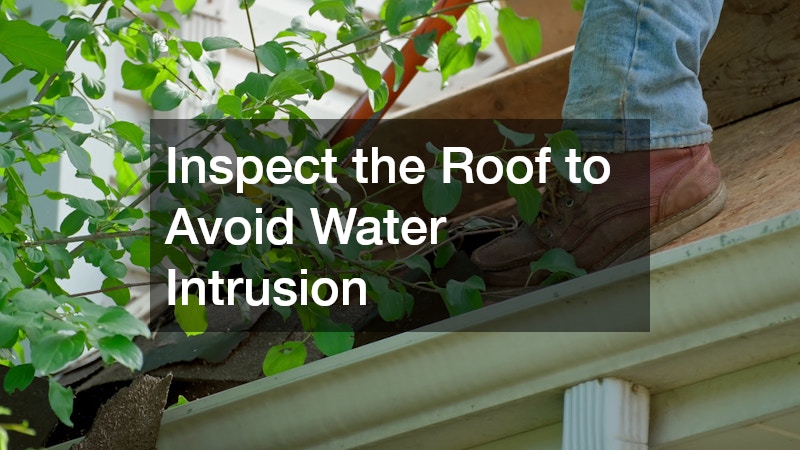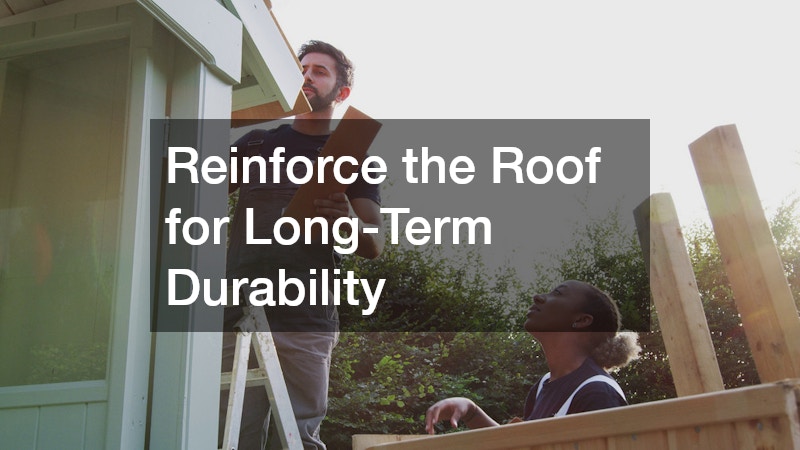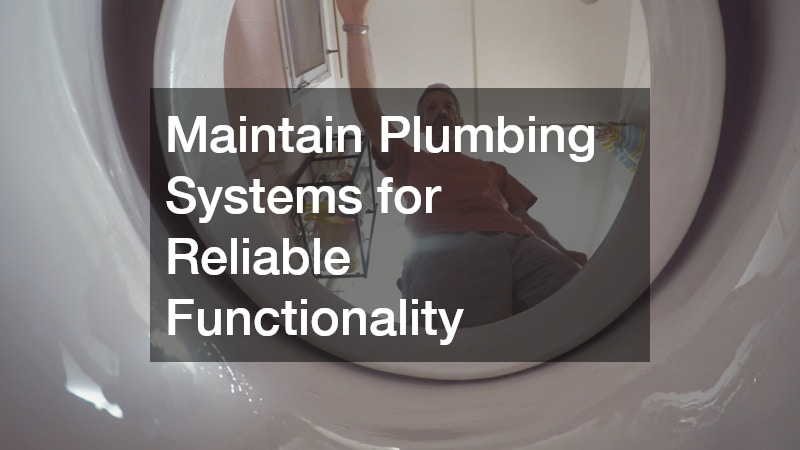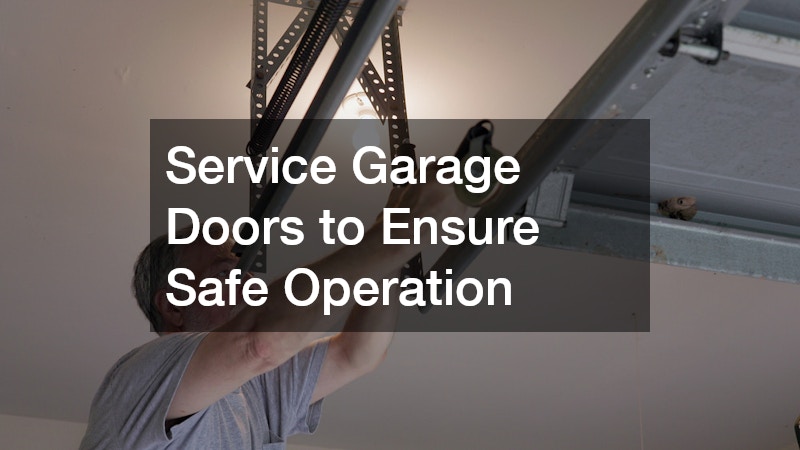Owning a new house is an exciting accomplishment that often comes with a strong sense of pride and relief. After all, everything looks perfect—fresh paint, clean finishes, and brand-new systems. Yet even a new home requires regular care to preserve its appearance, safety, and performance. Preventative maintenance isn’t just about fixing what’s broken; it’s about ensuring problems never reach that stage. Many homeowners mistakenly assume that because everything is new, upkeep can wait. However, ignoring small issues early on can result in major expenses later.
Preventative maintenance helps homeowners protect their investment while keeping systems efficient and avoiding costly surprises. It’s the best way to extend the lifespan of everything from your roof and siding to plumbing and security features. Taking the time to check, service, and repair components regularly allows you to address wear and tear before it causes larger problems. By understanding what needs attention in a new home, homeowners can ensure their property remains both beautiful and functional for many years to come.
1. Strengthen Entry Points to Protect Your Investment

A home’s first line of defense lies in its doors, windows, and other entry points. Even a new home can have locks that don’t quite fit right or doors that aren’t perfectly aligned, leaving subtle gaps that compromise security and energy efficiency. Over time, these small flaws can make it easier for intruders to enter or for conditioned air to escape, increasing utility costs. Preventative maintenance begins with ensuring every access point is properly sealed and secure. Routine inspections of latches, hinges, and window frames can make a major difference in overall comfort and protection.
Working with professional locksmith services helps identify weak points in your home’s locking mechanisms and improve overall security. A locksmith can install new hardware, upgrade outdated locks, and even integrate smart systems for added convenience. These experts not only enhance protection but also ensure that every door and window in your new home meets safety standards. Taking the time to reinforce your entry points is an easy yet essential investment that reduces risks and contributes to a safer, more energy-efficient home environment.
2. Seal Cracks to Stop Moisture and Energy Loss
Even minor cracks or gaps around doors, windows, and trim can allow drafts and moisture to enter your home. Though your new house might look flawless, construction settling and temperature changes can quickly create small openings that compromise comfort. Left untreated, moisture intrusion can lead to mold, peeling paint, and structural damage. Preventative sealing not only safeguards the structure but also supports a more energy-efficient home. Regular inspections during seasonal changes can help identify spots where sealing has weakened or separated.
Hiring a skilled caulking contractor ensures that all joints and seams are properly sealed with professional-grade materials. This prevents leaks, drafts, and unwanted pests from finding their way indoors. Caulking around plumbing fixtures, bathtubs, and kitchen counters also helps prevent water intrusion inside the home. Regular sealing maintenance keeps your new home energy-efficient, quiet, and protected from water damage. Over time, this simple habit improves comfort, lowers energy costs, and extends the lifespan of your walls, windows, and foundation.
3. Reinforce the Roof for Long-Term Durability

A roof’s longevity depends heavily on ongoing maintenance and professional attention. Even if your new house has a recently installed roof, regular inspections help prevent deterioration caused by debris, weather exposure, or clogged gutters. Preventative upkeep keeps your home insulated, weatherproof, and structurally sound for decades. Roof maintenance is often one of the most overlooked areas of home care, yet it’s among the most critical for long-term protection.
Partnering with a roofing company provides peace of mind that your roof is cared for by trained experts who can identify weak areas before leaks develop. They can replace damaged shingles, clear drainage systems, and ensure proper ventilation to prevent heat buildup in the attic. Some companies even offer maintenance plans that include scheduled cleanings and performance checks. These proactive steps extend the life of your roof and protect your new home from future repairs. Maintaining a strong, well-ventilated roof also improves energy efficiency and reduces the risk of ice dams, leaks, and structural decay.
4. Protect Your Belongings During Moves or Rearrangements
Moving into a new house can be a stressful process, and even small missteps can lead to scratches, dents, or scuffed walls. Whether you’re unpacking furniture, hanging artwork, or rearranging rooms, it’s easy to accidentally damage surfaces. Preventative maintenance starts from day one, even before you’ve fully settled in, by taking care to protect both your home and your possessions. Using felt pads under furniture, corner guards, and protective mats in high-traffic areas can help keep your interior pristine.
Working with an experienced local mover ensures that furniture and appliances are handled with care during transitions. Movers have the right tools and techniques to prevent unnecessary damage to walls, doorways, and flooring. They can also help you safely move heavy or delicate items into their proper place without risking injury or property damage. With professional support, your new home remains in pristine condition from the very beginning—setting the stage for long-term upkeep and comfort. Taking precautions during your move means fewer repairs, less frustration, and a smoother experience settling into your new environment.
5. Maintain Plumbing Systems for Reliable Functionality

Water is essential for daily life, but plumbing systems can quickly become a source of frustration if not maintained properly. Even in a new house, pipes and fixtures can loosen, water pressure can fluctuate, and hidden leaks can form over time. Ignoring these early signs of trouble can lead to costly water damage and mold growth that affect both health and property value. Routine maintenance allows homeowners to detect small leaks or pressure changes before they escalate into expensive problems.
Hiring a plumbing service to perform regular inspections and maintenance helps detect leaks, clean drains, and ensure all fixtures are functioning properly. Professionals can also evaluate water pressure and temperature consistency, ensuring everything operates efficiently. In addition, they can check for mineral buildup, inspect water heaters, and identify potential corrosion in metal pipes. Preventative plumbing care safeguards your new home against potential water-related damage while maintaining your daily comfort. A proactive approach now saves money, conserves water, and keeps your home’s infrastructure in top shape for years to come.
6. Remove Pests Safely to Preserve Home Integrity
Even in a new house, unwanted pests can find their way inside through tiny cracks, vents, or attic spaces. Bees, in particular, may establish hives in walls or roof cavities, leading to both property damage and safety concerns. The key is to act quickly and responsibly when any pest problem arises, ensuring that removal doesn’t cause more harm than good. Regularly inspecting your attic, garage, and exterior walls for insect activity can help prevent infestations from becoming established.
Professional humane bee removal services specialize in relocating colonies safely without harming the bees or damaging your property. This approach protects both the environment and the structure of your home. For homeowners, it’s a sustainable way to manage pest issues while maintaining the health and stability of a new home. Regular pest inspections by licensed professionals can identify early signs of nesting, allowing you to address them before they become major concerns. This type of proactive care helps preserve both your home’s structural integrity and the surrounding ecosystem.
7. Inspect the Roof to Avoid Water Intrusion
Your roof is one of the most critical components of your home’s defense system. Even a brand-new roof on a new house requires occasional inspections to verify proper installation and detect potential issues. Harsh weather, debris, and UV exposure can create early signs of wear that are easy to miss until leaks appear. By addressing roof concerns early, you protect your investment from structural and interior damage. Homeowners who schedule seasonal roof inspections are far less likely to experience costly emergency repairs.
A roofing service can perform a detailed inspection to identify vulnerable spots, loose shingles, or weak flashing before they become serious problems. These professionals understand how minor irregularities can cause future leaks, and they can provide solutions to keep your roof watertight and long-lasting. Many roofing specialists also clean gutters and remove debris to ensure proper drainage. Regular roof inspections ensure your new home stays protected, dry, and energy-efficient—no matter what the weather brings. A small investment in maintenance can easily prevent major issues like mold growth, ceiling stains, and insulation damage.
8. Update Siding to Maintain Curb Appeal
The exterior of your home does more than enhance its visual charm—it also serves as a barrier against weather and wear. Over time, even in a new house, siding can develop cracks, fading, or loosened panels due to temperature shifts and environmental exposure. Regular upkeep ensures your home maintains both its beauty and its protective qualities. Checking your siding annually helps identify issues before they escalate, allowing for small repairs rather than full replacements.
Consulting a professional siding company can help you evaluate the condition of your home’s exterior and recommend appropriate repairs or upgrades. These specialists ensure the siding remains tightly sealed and resistant to moisture and pests. They can also offer cleaning or repainting services to refresh your home’s appearance. A well-maintained exterior boosts curb appeal, improves insulation, and protects your new home from the damaging effects of the elements. Preventative siding maintenance keeps your home looking new for years longer while preserving its structural strength and market value.
9. Service Garage Doors to Ensure Safe Operation

Garage doors are often overlooked in maintenance routines, yet they play a vital role in convenience, security, and safety. A new house might have perfectly functioning doors at first, but without periodic care, parts such as springs, rollers, and tracks can wear down. Preventative garage maintenance reduces the risk of accidents, mechanical failures, and unnecessary expenses. Homeowners should test their garage doors monthly to ensure smooth operation and verify that the auto-reverse feature is working properly.
Reputable garage door companies can perform tune-ups to lubricate moving parts, test automatic sensors, and verify that doors open and close smoothly. They also check the alignment, tension, and safety settings of all mechanisms. These inspections not only prevent sudden breakdowns but also ensure your garage remains secure against intrusions. Maintaining the door system helps keep your new home safe, accessible, and efficient—avoiding costly replacements that come from neglect. Consistent upkeep ensures quiet operation, reduces energy loss, and extends the life of your entire garage system.
10. Detect and Fix Hidden Leaks Before They Spread
Water damage is one of the most common and expensive issues homeowners face. In a new house, plumbing leaks can sometimes go unnoticed because they develop behind walls or under floors. Even a small drip can cause serious harm to wood, drywall, and insulation over time. Detecting and repairing hidden leaks early is an essential part of preventative maintenance that saves thousands in long-term repairs.
Hiring a local plumber gives homeowners access to specialized tools and techniques that detect concealed leaks before they escalate. Professionals can use moisture meters, thermal imaging, and pressure testing to pinpoint problem areas. They can also inspect crawl spaces, basements, and utility rooms for hidden condensation or pipe wear. By addressing leaks quickly, you protect your new home from structural damage, mold, and unnecessary repairs. Regular plumbing inspections bring peace of mind that your home’s hidden systems are functioning properly and efficiently, ensuring a safe, dry, and healthy living space.
Preventative maintenance is one of the smartest and most cost-effective strategies for protecting a new house. Although it may be tempting to postpone care because everything looks pristine, early attention prevents small issues from turning into major repairs. A proactive approach allows homeowners to identify potential weaknesses in systems such as roofing, plumbing, and security before they create disruption or expense.
From strengthening locks and sealing gaps to maintaining roofs and managing pests, each aspect of preventative maintenance contributes to a safe, efficient, and comfortable living environment. By working with qualified professionals—whether it’s a roofing expert, plumber, or siding specialist—you can ensure that your new home remains in top condition for years to come. The investment you make in routine maintenance today preserves your home’s beauty, value, and reliability well into the future.


